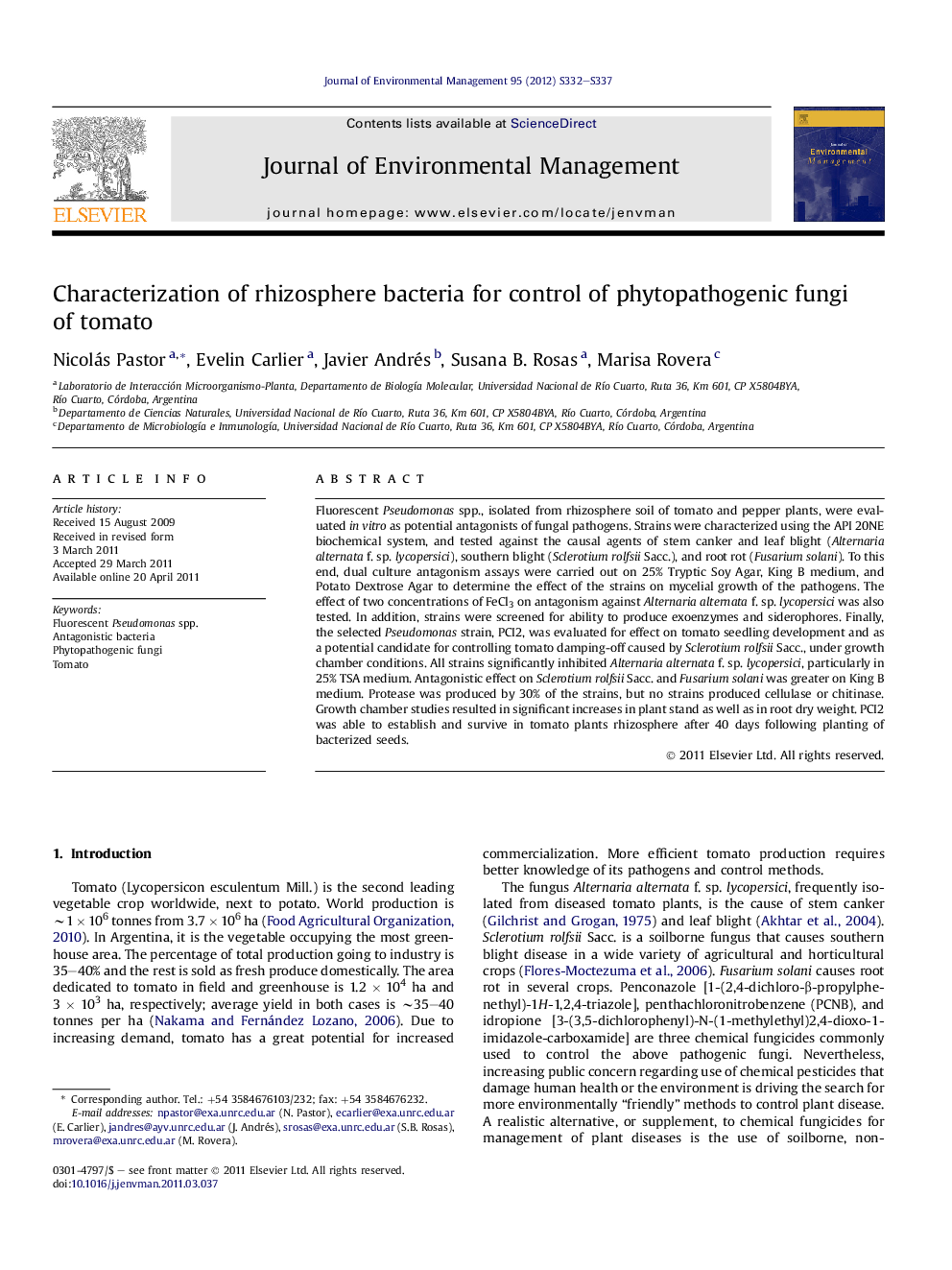| Article ID | Journal | Published Year | Pages | File Type |
|---|---|---|---|---|
| 1057075 | Journal of Environmental Management | 2012 | 6 Pages |
Abstract
Fluorescent Pseudomonas spp., isolated from rhizosphere soil of tomato and pepper plants, were evaluated in vitro as potential antagonists of fungal pathogens. Strains were characterized using the API 20NE biochemical system, and tested against the causal agents of stem canker and leaf blight (Alternaria alternata f. sp. lycopersici), southern blight (Sclerotium rolfsii Sacc.), and root rot (Fusarium solani). To this end, dual culture antagonism assays were carried out on 25% Tryptic Soy Agar, King B medium, and Potato Dextrose Agar to determine the effect of the strains on mycelial growth of the pathogens. The effect of two concentrations of FeCl3 on antagonism against Alternaria alternata f. sp. lycopersici was also tested. In addition, strains were screened for ability to produce exoenzymes and siderophores. Finally, the selected Pseudomonas strain, PCI2, was evaluated for effect on tomato seedling development and as a potential candidate for controlling tomato damping-off caused by Sclerotium rolfsii Sacc., under growth chamber conditions. All strains significantly inhibited Alternaria alternata f. sp. lycopersici, particularly in 25% TSA medium. Antagonistic effect on Sclerotium rolfsii Sacc. and Fusarium solani was greater on King B medium. Protease was produced by 30% of the strains, but no strains produced cellulase or chitinase. Growth chamber studies resulted in significant increases in plant stand as well as in root dry weight. PCI2 was able to establish and survive in tomato plants rhizosphere after 40 days following planting of bacterized seeds.
Related Topics
Physical Sciences and Engineering
Energy
Renewable Energy, Sustainability and the Environment
Authors
Nicolás Pastor, Evelin Carlier, Javier Andrés, Susana B. Rosas, Marisa Rovera,
